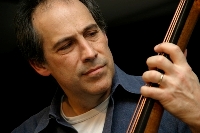
Michael Gold
'Art for Art’s Sake' in a Digital World
Posted by Nov 17, 2011 0 comments

Michael Gold
Art is language. It expresses dimensions of human sentience that words cannot.
But the language of art and the language of spoken word co-exist in a dialectic -- they both influence and change one another.
The languages of the arts are much more sensitive to change than spoken language, but both the language of art and the language of words are tremendously impacted by technology.
Virtual communications technology has the capacity to radically alter the rich nuance of connective qualities that spoken language has garnered from the language of art and vice versa over millennia. Look, for example, at how quickly language is being transmogrified by young people who engage in a constant flow of multiple conversations 12 hours a day through texting devices.
Technology will profoundly affect the artistic landscape in the coming decades. And debating the intrinsic value of a work of art will become even more critical as a means of combating the attention deficit that comes with digital society. But will the notion of “arts for art sake” mean the same thing that it did in the past in a culture structured by virtual reality? And, if not, what will arts for art sake possibly mean?
The traditional argument of “art for art’s sake” (depending on which camp is arguing what) can be a dangerous distraction in a world where our infrastructures are now built from combinations of ones and twos.
The fundamental changes that are happening in the world will, at the very least, redefine how art will be made moving forward. Here’s an interesting example of ways of integrating non-digital art into the Digerati world.
Artists have traditionally existed on the margins of society. A sad truth for some who chose a life in the arts in the 20th century, but even those artists had the stability of place within community.
The interesting thing about digital technology is that it has the power to eliminate natural margins. What happens to those natural social margins that, in the last century, were so rich in communities of art when society turns to the technology of digital design?
We need artists to achieve the wisdom that comes with age, the wisdom that comes with many years of fruitful engagement. A backlash from suggesting new roles for artists might actually be a good thing. My friend and colleague Arlene Goldbard writes an extremely articulate and powerful blog that sets an example of how we need to respond to the challenge of “arts for art sake” in a digital world.
We need to assure that young people will continue to choose the option of pursuing a career as a working artist in the 21st century. The meaning of “arts for art sake” has to reflect what young people see into the future.
The argument of "arts for art sake" in a digital world is a new animal. A backlash may be the only way to understand what this argument will mean moving forward.

